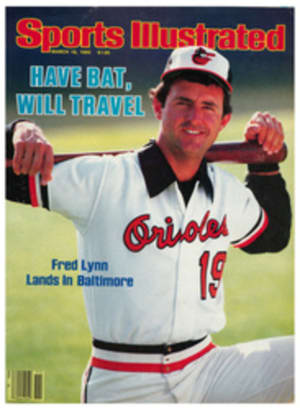
WAYNE STATE'S FENCERS DON'T MASK THEIR AFFECTION FOR 'THE MAESTRO'
The recession of the early 1980s hit Detroit hard. While the Motor City was idling, enrollment at Wayne State, a commuter school in the inner city, was dropping. It dropped from 34,408 students in the fall of '80 to 29,070 last fall. The university president summoned a commission to suggest budget cuts. Eliminate intercollegiate basketball, football, baseball, track and tennis, the commission recommended. Every sport would have to go—except fencing.
But wait. When the commission discovered that Wayne State's prized fencing team couldn't compete for national championships unless the school kept at least six NCAA sports, it backed down. The athletic department was spared to save Wayne State fencing.
It is merely the finest fencing program in the country. From 1975 to '84 the Wayne State Tartars won six NCAA championships, and over a span of 45 years have taken 17 individual fencing titles and produced more than 50 All-Americas, five last year. When the best college fencers in the U.S. compete in the NCAA championships this week in South Bend, Ind., Wayne State—a school surrounded by low-income housing projects and framed by three highways—is a co-favorite, with Notre Dame, to win its fourth straight title.
Wayne State clearly needs all the glamour it can get. Its nickname used to be the "Munies," as in municipal. Its most recognizable alum is Lily Tomlin. And it is often confused with Wayne State College in Wayne, Neb.
"Fencing is very important, in a quiet way, for the university," says president David Adamany. "It stands as a reminder that even if a university doesn't have an historical tradition or ivy-covered walls, it can be excellent in many areas."
That isn't to say that Wayne State splurges. The entire yearly budget—including two coaches' salaries, travel, nine scholarships and equipment—is $72,000. (Notre Dame's is about the same.) The team hosts only one home meet every year, and the 19 fencers (men and women) never practice at the same time because there isn't enough equipment to go around.
Anyone within a sword's length of the program knows that one man, Istvan J. Danosi, put Wayne State fencing on the map. He used to usher his team into restaurants and announce in a Hungarian accent, "Dis is the Vayne State fencing team," as if patrons should put down their forks and applaud. He insisted that people call him Maestro, and they did, because they were in awe of the things he orchestrated. He took freshmen like Mark Masters and Andy Haliw, guys who'd never heard the word "parry," and made them All-Americas. He told his swordsmen, "When you have a weapon in your hand, you must stand 10 inches taller."
Even before Danosi, now 73, arrived at Wayne State in 1957, the fencing team was pretty good. He made it outstanding. And though he retired in 1982, after 25 years of coaching, the program he built continues in his image. His protégé as coach, Gil Pezza, 30, a native of Italy, had been a two-time NCAA épée champion for the Maestro.
Along with success has come criticism, mainly over the school's dependence on foreign fencers. There's a lot of resentment, says Richard Daly, an assistant coach at fencing archrival Notre Dame. "People say things like, 'Nice All-America, but can he speak English?' " This year Wayne's six representatives at the NCAAs are three Italians, a Frenchman, an Australian and but one American. There are three foreign fencers on Notre Dame's NCAA squad. NCAA rules permit Division II schools like Wayne State to use older athletes who would be ineligible at Division I schools like Notre Dame. Indeed, currently the foil champion of Australia, Peter Dinsdale, is a 26-year-old Wayne State freshman.
Wayne State officials will tell you they need every break they can get because they don't have much luck recruiting experienced Americans. "American fencers are elitist," says Adamany. "They look for residential, high-profile universities." Danosi built the program with whatever top foreign talent he could get and molded some commuters into fencers.
Today, Wayne Staters 15 years out of college are still enchanted by his eccentric ways. "Maestro always wore sunglasses inside the gym, so we all wore sunglasses inside the gym," says Hill Crawford, 38, a systems analyst who had never fenced until he entered Wayne State in the late '60s.
"Ve all used to talk like Coach," says Howard Davis, 38, now a Detroit financier. Davis also says, "He had nothing to work with in us." Maybe not, but Danosi was a master of motivation. When Notre Dame fencers started praying before dual meets with Wayne State, Danosi began a little prayer of his own. "Come on, boys," he'd say, gathering his fencers in a circle. And then they'd pray for God to stay out of it so the best fencers—not the most religious—would win. "My God, don't help!" they'd whisper. "Just watch how we're going to beat them."
It was Danosi's landing of Greg Benko in 1972 that began Wayne State's fencing dominance. Danosi spotted Benko, the Australian junior foil champion, at the world junior championships in Madrid. "I put a beer in his hand," says Danosi. "He liked that. And then I asked, 'You would not like to fence on my team at Wayne State University in Detroit on a scholarship?' "
Danosi's English wasn't perfect, but Benko understood well enough, and he signed on. Italy's Ettore Bianchi, a senior, the defending NCAA épée champion, didn't know anything about Detroit until he got the word from his paesano Pezza, Wayne State class of '81. "We tell juniors and seniors to go home and talk about Wayne State, and then foreign recruiting snowballs," says Pezza.
How could they stay away after they'd heard the legend of the Maestro? After Danosi received his fencing degree (Royal Hungarian Sport and Fencing Institute, class of '35), he tutored military cadets in Transylvania. At the Hungarian National Theater he choreographed every fencer's favorite play—Hamlet. When the country turned Communist after WW II, Danosi was ordered to stop coaching because fencing was the sport of aristocrats. But the Communists changed their minds a few years later, Danosi was ordered to start coaching again, and he led Hungary's Olympic team to a gold medal in saber at the 1952 Helsinki Games. But Danosi was a free spirit, and in 1956 he joined the attempt to overthrow the government.
After the revolt was suppressed, he fled from Budapest to New York City. He raked leaves in a cemetery for 10 days to support his wife Margit and children Margaret and Steve. Then New York University's fencing coach, Hugo Castello, found him, and hired him as an assistant. A friend told Danosi about a school named Wayne State, whose fencing coach, Bela E. deTuscan, was ready to retire. By summer Danosi was head coach there.
Until the early 1970s, Columbia and NYU dominated national team championships. Then Wayne State began to catch up, from 16th place in 1969 to third in 1973 and second in 1974.
In 1975, Yuri Rabinovich, a defector from the Soviet National Team, landed on Danosi's doorstep by accident. "I opened a map and picked Detroit," says Rabinovich. "It was one chance in a million." He won the saber competition in the NCAAs that year, and Benko took the foil title. The team's third fencer, Masters, an American Danosi had found in a beginners' class, fenced so skillfully that "when the épée was over," says Danosi, "I turned to Mark Masters and said, 'You are now second in the nation.' He couldn't believe it; he kissed me."
As a team Wayne State was No. 1 in the nation. Danosi coached the Tartars to three more men's titles and one women's championship before retiring at age 70. "The president begged me to stay on," says Danosi. "He wanted me to keep coaching until I could no longer move." Danosi still helps in recruiting, and holds private classes.
Surprisingly, Wayne State's foreign fencers are very good, but not Europe's best. They leave Europe and the most competitive fencing in the world to get an American degree. Bianchi's dream is to utilize his 4.0 average to get into a top American graduate business school.
The mark of Danosi was everywhere as Wayne State's fencer-scholars participated in a recent home meet. Rabinovich is now the assistant coach. Benko officiated the foil competition. Masters, the American who came through for Maestro in '75, called the action over the loudspeaker. Davis and Crawford, who had never fenced before they met Danosi, satin the stands telling affectionate anecdotes in Hungarian accents.
And on the floor the distinguished Danosi moved from event to event, saying, "Oh, beautiful! Oh, beautiful!"
PHOTO
BUCK MILLER
During a coaching clinic, the unretiring Danosi makes some pointed remarks to his students.
TWO PHOTOS
BUCK MILLER
Bianchi (left) duels with Pezza (below), a fellow Italian in the Motor City.

